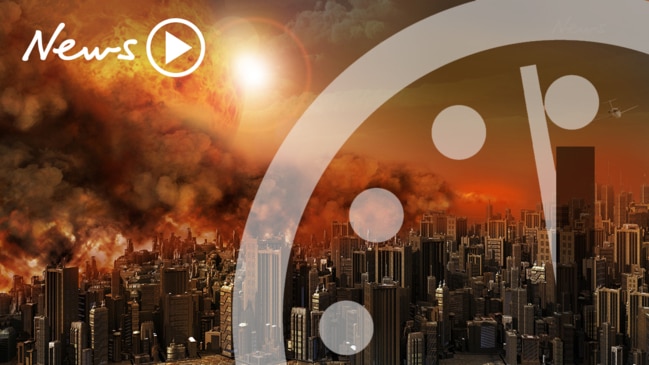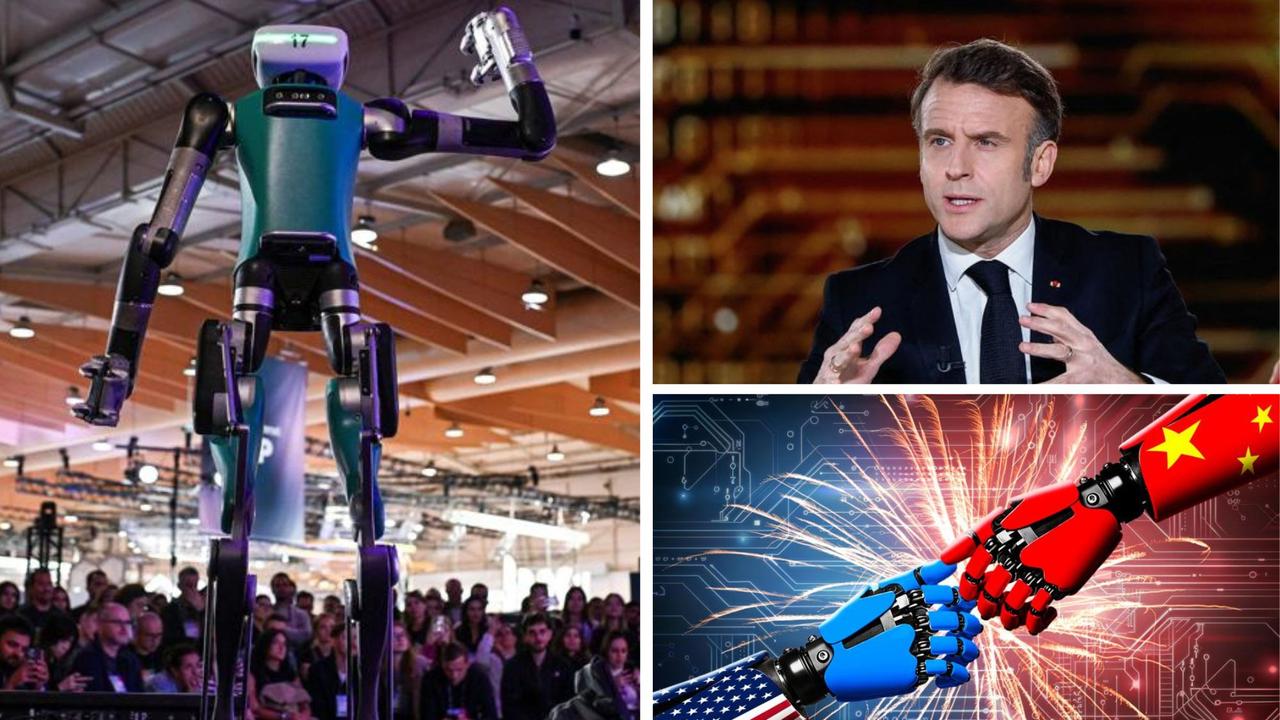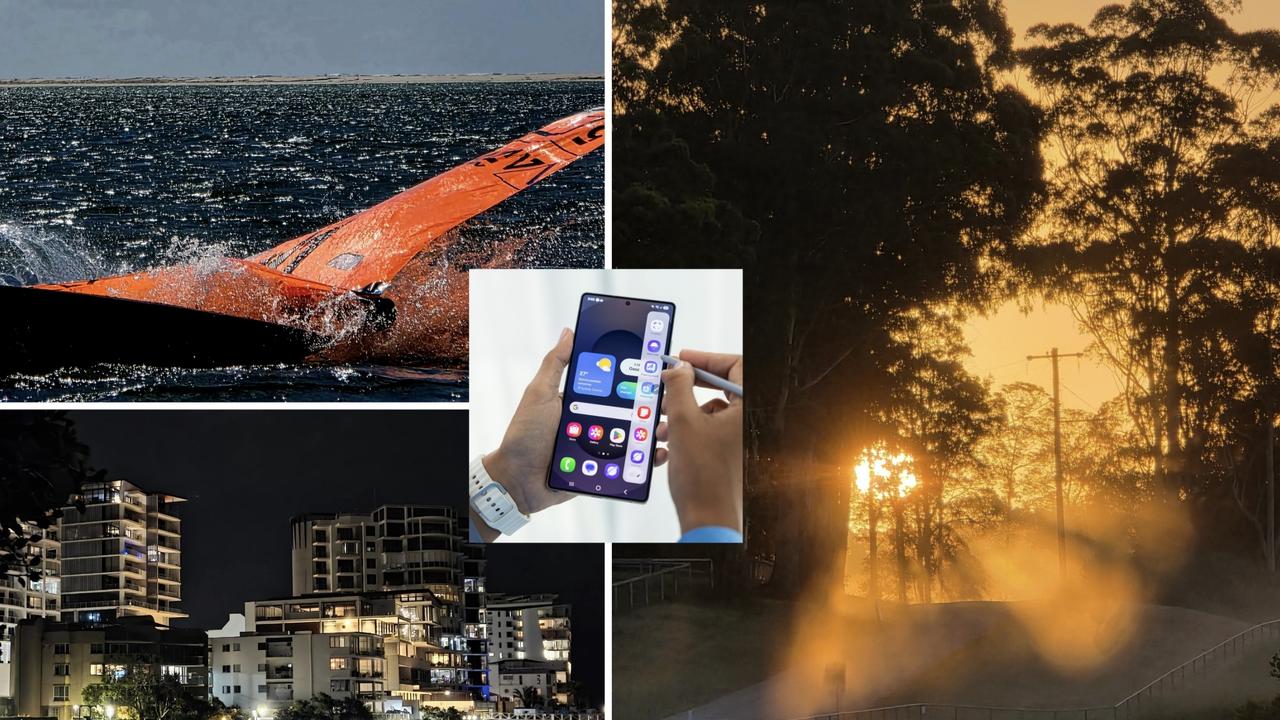Doomsday clock brought forward 20 seconds as keepers call on world leaders to act
The keepers of the Doomsday clock has said we’re closer than ever to meeting our end, and they say one group of people is to blame.

Innovation
Don't miss out on the headlines from Innovation. Followed categories will be added to My News.
The keepers of a “doomsday clock” tracking how close we are to global disaster have moved the clock forward another 20 seconds in a reflection of how close we are to our eventual demise.
The symbolic clock is kept by The Bulletin of the Atomic Scientists, founded after the invention and use of the atom bomb in World War II.
Nuclear war, climate change, and information warfare have been identified as the three biggest threats to human survival, and according to the Bulletin, there's one particular class of people to blame.
“The international security situation is dire, not just because these threats exist, but because world leaders have allowed the international political infrastructure for managing them to erode,” it said.

The Bulletin of the Atomic Scientists president and CEO Rachel Bronson said time is running out to do something about it.
“We now face a true emergency – an absolutely unacceptable state of world affairs that has eliminated any margin for error or further delay,” Ms Brosnan said, adding that for the first time in its 73-year history, the doomsday clock is “expressing how close the world is to catastrophe in seconds – not hours, or even minutes”.
Think it’s embarrassing we haven’t moved to a digital Doomsday Clock
— Nic Sampson (@NicSampson) January 23, 2020
AUSTRALIA SAVAGED OVER CLIMATE
The Bulletin’s executive chairman, former governor of California Jerry Brown, warned “dangerous rivalry and hostility among the superpowers” was increasing the chance one of them could make a nuclear mistake.
He said climate change “just compounds the crisis”.
He also had a few stern comments for Australia, saying our government is “in utter and complete denial” about climate change.
“Under its current leadership, Australia is fostering denial in an incredibly mendacious way,” he told Nine newspapers.
“Mendacious” is the five dollar word for “lying”.
“Until Australians throw out their current leaders they will continue this way … It’s time to wake up.”
The current government led by Scott Morrison has now said it accepts the science behind climate change and plans to focus on mitigation and adaptation to deal with natural disasters that change exacerbates, such as the ongoing bushfire crisis.
The slogan it’s using to sell this plan is based around the idea that Australia will “meet and beat” targets for emissions reduction set under the Paris Agreement.
But Australia has been widely derided for its refusal to relinquish an option that would allow us to meet (and potentially beat) those targets by using credits from the Kyoto Protocol.
The credits are from exceeding our targets under that agreement, which were unambitious and allowed Australia’s emissions to actually increase for a number of years.
Earlier this week, the Minister for Energy and Emissions Reduction Angus Taylor said Australia would “strive to beat” the targets but would use those credits “if we have to”.
The focus of the government is on “a target which we can achieve without trashing the economy”, Minister Taylor told Sky News on Tuesday.
While the Australian government’s focus is on the economy, economic leaders are focused on climate change.
Environmental factors dominated the top 5 risks in the World Economic Forum’s recent Global Risks Report for 2020, the only time a single category has done so.
Weapons of mass destruction was not on the list of likely risks, but has been in past years.
The World Economic Forum (WEF) recently held its annual meeting in Davos, Switzerland.
The emissions from private jets used by high flying global economic figures to travel to and from the popular ski resort is estimated to produce more than 18,000 tonnes of CO2 emissions.
"The cost of inaction today far exceeds the cost of action."@borgebrende, president of the @wef, says it's past time for world leaders to take climate change seriously pic.twitter.com/WooD7rAGQw
— QuickTake by Bloomberg (@QuickTake) January 15, 2020
In an effort to offset both the emissions and the criticism, the WEF had a fleet of vehicles that were 88 per cent made up of electric or hybrid vehicles to shuttle attendees around, and installed a few solar panels on the main event venue.
The WEF also eliminated plastic for bags and drinks, as well as not serving meat or fish on one day of the week-long conference.
It’s also encouraged those who do fly via private jet to use “sustainable aviation fuel”, a 30/70 blend of synthetic and conventional jet fuel estimated to lower emissions by about 18 per cent.
While actual data is unclear, Skype and other video conferencing tools that allow you to talk to people from around the world without travelling to where they are produce an estimated 100 per cent less emissions than private jets to ski resorts in the Swiss alps.

From Davos, Australian finance minister Mathias Cormann defended the government’s climate change record to CNBC.
“We are a large continent with a small population, so considering the emissions reduction targets we’ve committed to on a per capita basis we will be more than halving emissions and indeed we will be reducing the emissions intensity in our economy by two-thirds,” Mathias Cormann said, using the per capita measurement which would make Australia one of the world’s leading emitters if used instead of the current methodology.
That one allows Australia to claim we are responsible for only 1.3 per cent of emissions, like many other countries who are also only small contributors to global emissions if you don’t count emissions from their exportation of fossil fuels.
Mr Cormann made the claim the targets are “more ambitious than the UK, than Canada, than New Zealand, than many other countries around the world.”
Last year, New Zealand passed legislation committing the country to becoming carbon neutral by 2050.
The UK has a similar target, as does France.
Sweden aims to achieve that goal five years earlier, by 2045.
Australia has no plan for carbon neutrality, but the City of Adelaide does.
Sydney and Melbourne city councils are both certified carbon neutral, but this is achieved by purchasing offsets rather than eliminating emissions.

Last year, Minister Taylor used a fake document with phony figures to accuse the carbon neutral City of Sydney of not doing enough after Lord Mayor Clover Moore asked the federal politician in charge of reducing emissions to do something to reduce emissions.
He’s now under investigation by the Australian Federal Police.
BUT BACK TO THE BOMBS
The Treaty on the Non-Proliferation of Nuclear Weapons (NPT) promotes disarmament and seeks to prevent more nuclear weapons being created. It has helped reduce the number of nuclear weapons in the world, but that number is still in the thousands, and it would only take a handful to wipe out swathes of the human population and make many places uninhabitable or unsafe for years to come.
Currently, we know the United States, Russia, the UK, France, China, India, Pakistan, and North Korea all possess nuclear weapons.
Israel is also believed to have stockpiles of nukes but the country has never confirmed or denied that it does.
The first five countries on that list are party to the treaty, which North Korea left in 2003.
India, Pakistan and Israel never joined.
Iran could possibly have nuclear weapons or be in the process of developing them, but is also signed on to the treaty.

In 2018, US President Donald Trump ended a 2015 agreement with Iran that aimed to prevent them developing nuclear weapons in exchange for sanctions imposed against the country in 2010 being lifted to allow for trade.
With the end of that deal it’s feared Iran possesses or is developing nuclear weapons, and tensions between the US and Iran have been building in recent months, particularly after a US air strike killed Iranian general Qasem Soleimani three days into the new year.

Whether conflict escalates between the US and Iran, Mr Trump will want to make doubly sure the country actually has weapons of mass destruction (WMD) before using it as an excuse to invade.
He said the US used WMDs as a justification for the “big fat mistake” that was the 2003 invasion of Iraq.
“They lied. They said there were weapons of mass destruction; there were none. And they knew there were none. There were no weapons of mass destruction,” Mr Trump said during the February 13, 2016 Republican primary debate in South Carolina.
While a handful of countries possess nuclear weapons, only the United States has actually used them against another country, dropping bombs on the Japanese cities of Hiroshima and Nagasaki to bring about the end of World War II.
The countries that do possess nuclear weapons primarily develop them because other countries they don’t like possess them. The mutually assured destruction aims to stop either country using nuclear weapons.

This is why the United States and Russia have so many nukes, after the decades long Cold War.
India and Pakistan have been in hot and cold conflict more or less since the two countries gained independence from Britain in 1947 (coincidently, the same year the Doomsday clock was founded).
Much of the conflict has focused on the disputed Kashmir region, some of which is also held by China.
Israel, which has fraught relations with its Middle East neighbours, is thought to have nuclear weapons as well.
The decision to move the Doomsday Clock forward was made by the Bulletin’s science and security board.
In a statement, the board said the nuclear and climate dangers “are compounded by a threat multiplier, cyber-enabled information warfare that undercuts society’s ability to respond”.
This information warfare manifests in things like Russian “troll armies” that spread misinformation online. In a time before the internet, the United States Central Intelligence Agency would spread propaganda in foreign countries through local news media, but this was a far more involved process.
North Korea and China have also engaged in cyber warfare campaigns against other countries, including us, and the Australian government has acknowledged we do it as well.
This is the first time the clock has been moved since 2018, when it was brought forward 30 seconds to two minutes before midnight.

As the symbolic clock was moved on Thursday, the Bulletin’s experts were joined by former Irish President Mary Robinson, leader of a group of prominent former world leaders founded by Nelson Mandela known as the Elders.
The Elders deputy chairman, former United Nations Secretary-General Ban Ki-moon said the US withdrawal from the 2015 Paris climate agreement and the Iran nuclear deal, deadlock at nuclear disarmament talks, and divisions in the UN Security Council meant “our mechanisms for collaboration are being undermined when we need them most”.
Ms Robinson called on world leaders to join in working “to pull humanity back from the brink”.
With wires.
Has this advancement of the Doomsday clock got you more worried than you were twenty seconds ago? Let us know in the comments below.
Originally published as Doomsday clock brought forward 20 seconds as keepers call on world leaders to act


